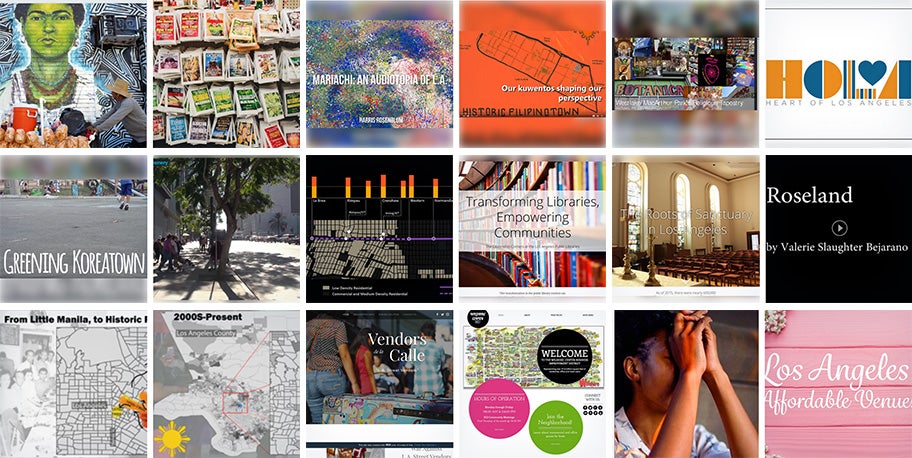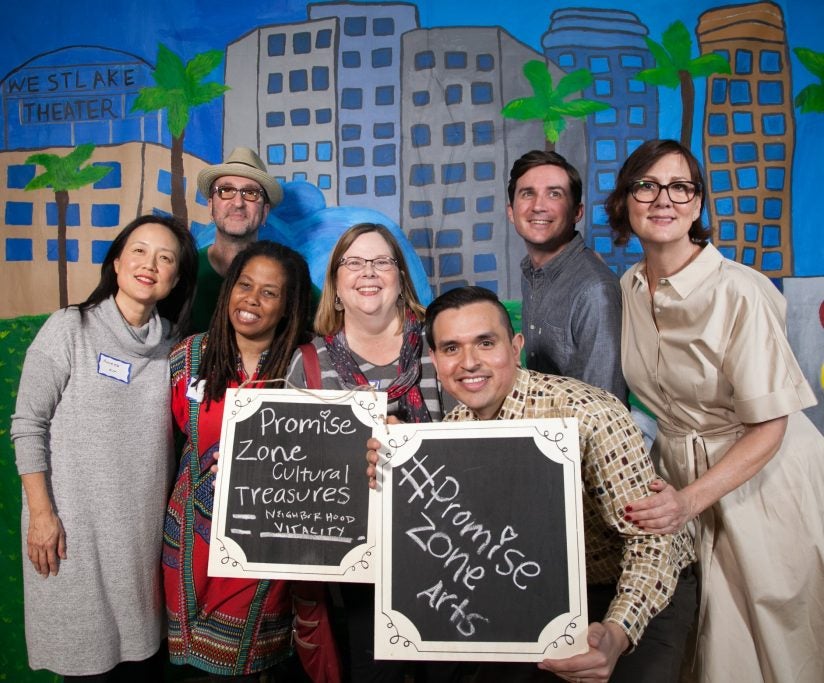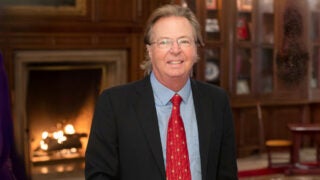Cultural treasures in your own neighborhood? They’re all over L.A.
USC Price students use their camera skills to create media featuring everything from mariachi music to street vendors
Los Angeles is a city where casual tourists can obtain a map of celebrity homes — yet lifelong residents might not be able to locate cultural treasures outside of their own ZIP codes.
To raise the profile of cultural assets located in the neighborhoods that form the Los Angeles Promise Zone, a federally designated community impact and improvement program, USC graduate students created a collection of maps, videos and media highlighting everything from mariachi music to street vendors.
The students produced these projects for “Urban Spatial Ethnography and Critical Cartography,” a course about alternative mapping taught by Annette Kim, associate professor and director of the Spatial Analysis Lab at the USC Price School of Public Policy. The course represented a partnership with Promise Zone Arts, a cultural asset mapping initiative led by the city of Los Angeles Department of Cultural Affairs (DCA), LA Commons and the Alliance of California Traditional Arts (ACTA).

“Promise Zone Arts is about giving voice to the community,” said Danielle Brazell, general manager at DCA. “Identifying and recognizing cultural treasures that residents deem significant is a strategy for ensuring cultural and economic sustainability.”
Umi Hsu, digital strategist at DCA, added, “For Promise Zone Arts, research means searching with the community. Our methodology combines the principles of ethnography, participatory action research, digital storytelling and open data.”
Exploring the city, sharing its stories
By working with Promise Zone Arts, the students were able to get to know their city, while acquiring skills ranging from GIS mapping to videography to graphic illustration. The students were also able to make a public contribution to mapping cultural assets in diverse communities across central Los Angeles: Hollywood, East Hollywood, Pico-Union, Westlake and Wilshire Center.
One such contribution is a video offering a community perspective on Historic Filipinotown, or Hi-Fi, in Westlake. After a brief introduction in the video, a student from the USC Suzanne Dworak-Peck School of Social Work, Eddy M. Gana Jr., gives a tour not only through space, but also through time — highlighting the historic events, festivals and community gatherings that make this neighborhood Hi-Fi, even though many of its Filipino residents have dispersed to other parts of the city.

“Having gone through the video project, it’s challenged me to rethink how we see space,” said Master of Planning student Garrett Rapsilber, who produced the video with fellow MPL student Kirsten Mandt. “Often, we fall into a trap where if we don’t see it on a map, if it’s not something permanent that’s there 24/7, it just doesn’t exist or we don’t give enough weight to its importance.
“In Hi-Fi, maybe there’s not a large permanent presence of Filipino establishments, but it’s still a really important place of gathering,” he explained. “And for me, unless I had talked to Eddy, I would not have learned that this is a continued place of gathering.”
In the video “Botanicas of Westlake,” Master of Heritage Conservation student Andrea Dumovich and MPL student Eric Tunell map another cultural asset of the neighborhood. Offering a combination of health care and spiritual aid, botanicas sell herbal treatments, votive candles and other alternative remedies for many Angelenos without medical insurance. Underscoring their role, botanicas are often adjacent to traditional pharmacies.
“When I saw this presentation, and I saw just how many botanicas there were in this small, few square-mile radius, it was really incredible,” said Beto González, program specialist at ACTA. “And we decided to actually incorporate it into our list of cultural treasures in a broader way — all of the botanicas of the Promise Zone — and use their project as our little feature.”
Showcasing their talents
The students had the opportunity to present all of their final projects to their partners at the DCA, ACTA and LA Commons.
“The students really brought a creative lens to the mapping of different cultural assets in the community,” said Karen Mack, executive director of LA Commons. “I enjoyed their films a lot. It was a fantastic collaboration.”
González added, “It was great to see the students’ take on some of these cultural treasures that they covered.”
The students also shared their projects at a community event on Jan. 13 at the Shatto Recreation Center, at the Wilshire Shatto Center in downtown Los Angeles.
Next year, Kim will offer the course again in partnership with Promise Zone Arts. The goal is to prepare students not only to conduct research, but also to engage the public.
“White papers are really important, and statistical studies are really important, but you need more than that,” Kim said. “Public policy and planning need creative people. And we have really talented, creative students — some of them are photographers or cinematographers. So it’s great that more of our students are combining these skills for a public purpose.”



